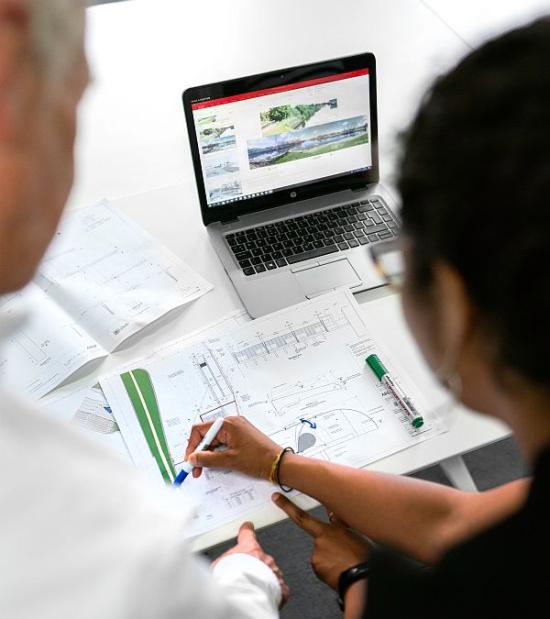Belgium is the fourth most productive country in the world, but our productivity growth has been sputtering. In this series we present practical tips each time to boost productivity in the office and on the shop floor.
In the first part of this series we discussed the productivity of Belgian companies. Productivity growth in our country has been substandard in recent years. However, productivity growth remains a major indicator and makes it possible to maintain our prosperity in an ageing world with a shrinking active population. It allows us to improve our well-being simply by working fewer hours.
In order to support Belgian companies with their productivity improvements, we collect a number of tips that we will publish at regular intervals. Since there is still a lot of low-hanging fruit in most companies, these tips do not focus on implementing advanced technologies, but on improvements that are feasible for everyone.
Tip 91: Implement an absence policy
Since 2010, absenteeism in Belgium has been steadily going up year after year and it now stands at around 6 per cent, half of which refers to short-term absences (less than a month). When looking at the figures, it is striking that short-term absences are higher among young workers compared to older workers. In addition to major differences between companies, striking differences are often revealed between departments in the same company. This indicates that absenteeism cannot be reduced solely to illnesses, but that quite some absences are the result of problems in the organisation.
Absenteeism can be reduced by implementing a good absence policy that focuses on reducing the duration and frequency of absences. Unfortunately, we have found that only a minority of companies have a sound absence policy. A good starting point for developing an absence policy is analysing the absenteeism figures: how do you score compared to peers and how do the different departments compare? Payroll companies can provide the statistics you need to do this. Afterwards, you can determine the appropriate measures to reduce absenteeism in your organisation. A good absence policy relies on three pillars: reactive, curative, and preventive measures. A few things you could do:
Reactive measures:
- Make clear agreements on reporting sickness: for example, ask the employee to call their immediate superior in the morning (this creates a threshold) and during this call, the superior should tell them that the employee will be missed.
- Conduct absenteeism interviews in case of frequent absences, where the manager and the employee look for possible work-related causes of the absence together.
Curative measures:
- Provide proper support for sick employees: maintain regular contact with employees during their illness (people return more quickly if there is personal contact).
- Explore together whether the employee can be deployed for other tasks during the recovery period so that you can still make use of his 'remaining capacity'. Employing an employee part-time often also provides relief to facilitate the return.
Preventive measures:
- Improve ergonomics of workstations (see tip 31), provide training on lifting and hoisting, prevent workplace accidents.
- Let employees take full leave, encourage employees to maintain a more active lifestyle (bicycle plan) and to sit down less (stand-up meetings, sit-stand desks).
- Provide a pleasant working environment: organise regular breaks and moments of relaxation, show appreciation for their work, organise the necessary variation, ensure engagement (ask for and act on their ideas to improve the working environment).
Want to learn more about preparing an absence policy? You can find more information in Agoria's white paper on absence policy.
Tip 92: Don't talk about efficiency, but about making work easier
Initiatives aimed at increasing productivity can come across as threatening. Put yourself in the shoes of a forklift driver who learns during a lean session that transport is a waste and should be eliminated. He won’t be very motivated to contribute to this process. The fundamental problem is that the perspective of many initiatives is the narrow interest of the company, while no adequate answer is provided to the employee's "what's in it for me" question. As a result, such improvement programmes do not catch on and results are disappointing.
Toyota, a true champion of improvements, first gently takes away fears of job loss by promising job security to permanent employees. For organisations that are in a growth phase or have many temporary workers, these reassuring promises can actually be made. Unfortunately, this does not apply to all organisations.
Another approach is to put the employee at the centre, and focus productivity improvements on making their work easier. So don't tell your forklift driver that you want to eliminate their work, but find out together what can be done to make their job easier. Possibly they now lose a lot of time driving through crowded corridors or searching for the materials. If you make their work easier, they will waste less time and, finally, also increase their productivity. Also keep in mind that many employees are allergic to the word 'efficiencies', which they often associate with harder work and layoffs. So don't talk about 'making work more efficient', but about 'making work easier'. A simple question like "what is hindering you at work?" can put you on a track for a lot of improvement ideas. If, subsequently, you effectively address their concerns, job satisfaction and engagement will also rise, and you may end up in a spiral of improvements.
Tip 93: Use engineering standards
Engineering tasks such as product design, process design and work preparation include some creative tasks, but also consist of some routine elements. Standardising routine elements can often result in solid productivity gains. Standardising engineering work involves establishing the best known way to perform a task, and then applying it constantly. An engineering standard can take different forms, such as a documentation template, a checklist, a fixed component list, a folder structure, ... Defining these standards avoids reinventing the hot water every time and avoids confusion.
For example, we recently saw a bus builder who was often faced with cables that were too short in assembly. Production workers did not have instructions on cable routing in the bus and so sometimes chose routes that were too long. By defining the routes in a standard, this ambiguity could be avoided. That way, production knew how to route the cables, and it was also clear to the various engineers how to calculate cable lengths.
Making good standards takes a lot of deliberation. Align the standards with the users so that you only deliver this information that is really needed and in a format that is optimal for the users. This will create uniformity in the work of the different engineers, which will also make it easier for production workers.
Tip 94: Consider introducing home working and hybrid working
It has long been known from research that working from home can increase productivity. For instance, studies show that call centre workers are 7-14 per cent more productive and patent examiners are about 4 per cent more productive when working from home. However, these are typically individual tasks, requiring little collaboration.
In environments where collaboration is important, hybrid working offers a solution. Hybrid working typically combines 2-3 days of home work per week with office work. Researchers were recently able to test the impact of hybrid working among a group of 1,652 engineers, marketers and finance staff of a large company (Trip.com). In the study, employees with odd birth dates could work from home on Wednesdays and Fridays, while the rest of the days were spent at the office. The remaining employees acted as a reference group and worked exclusively at the office.
The study revealed four findings: hybrid working led to higher job satisfaction and reduced the likelihood of someone quitting their job by 35 per cent. Second, the number of hours worked decreased during home days, but increased on other days. Thirdly, the number of messages sent and video calls increased both during homeworking days, as well as during other days, indicating that the nature of office work is also affected by homeworking. Fourth, the number of lines of code written increased by 8 per cent and hybrid workers themselves estimated that their productivity had increased by 1.8 per cent. Furthermore, they saw no significant impact on performance reviews and promotions. Given the positive impact in terms of retention, job satisfaction and productivity, the company in question decided to enable hybrid working for all employees.
Finally
Do you have any tips to share? Let us know so that we can share them and become more productive together! The best tipster of the week will get a nice gift!
You can find an overview of the other parts of this series with tips here.
Shortening lead times makes it possible to grow as a company and to reduce lots of indirect costs. The quick response manufacturing (QRM) production strategy makes this possible for companies in a high-mix-low-volume environment. From 30 March (Diepenbeek) and 18 April (Ghent) we are organising a next QRM training cycle.






